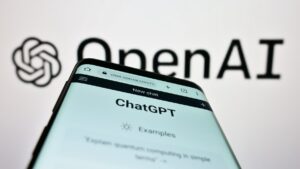Schools figuring out cell phones but now must grapple with AI
More schools are banning cell phones.
In a recent round of restrictions and “belt tightening,” states that previously allowed limited use of cell phones during the day are turning to absolute…

More schools are banning cell phones.
In a recent round of restrictions and “belt tightening,” states that previously allowed limited use of cell phones during the day are turning to absolute bans or tighter restrictions during class time.
California Gov. Gavin Newsom is urging schools in the nation’s largest state to “restrict smartphone use on campus” and find ways to lessen phone use in class. Doing so will lead to “improved concentration, better academic outcomes, and enhanced social interactions,” Newsom said in a letter Tuesday, urging districts to implement these changes before the school year starts.
Other states are cracking down as well.
Pennsylvania, for instance, is giving districts $100,000 grants to buy locking bags to ensure cell phones are put away during the day. The program is optional, and participating districts must study and report on its impact on student performance and behavior.
“Kids spend so much time on social media and using their smartphones that it’s taking a toll on them mentally, emotionally, and academically,” says Ryan Aument, a Pennsylvania state senator who sponsored the locking bag legislation. “Smartphone restrictions have proved successful in reversing these trends. Students deserve to learn without a constant distraction in their pockets.”
Loudoun County, Virginia Public Schools will now ban cell phones in elementary schools, require them to be kept on “silent” in middle school lockers, and placed in dedicated classroom storage areas in high schools. The Los Angeles Unified School District, the nation’s largest, is also developing a policy to limit or ban cell phone use during the school day.
Last year, Florida became the first state to crack down, passing a law requiring public schools to ban student cellphone use during class time and block access to social media on district Wi-Fi networks. Some districts went further and banned phones for the entire school day.
The rise of artificial intelligence
Cell phone use in schools has increased drastically over the last two decades, and the rise of social media and the smartphone have increased social pressure and distraction for many students, leading to a backlash from administrators.
As the tide turns, a wave of AI, or artificial intelligence, is also crashing into schools nationwide.
Districts are struggling to adjust as the AI revolution happens around them at breakneck speeds. Even understanding what AI is and its many uses is a daunting task that schools are just starting to grapple with.
The National Education Association (NEA), the nation’s largest teachers’ union, passed its first AI policy in June. The union documents the rapid rise in AI usage among middle and high school students – 80%, according to a recent report, up from 50% last year – but said only 22% of faculty reported using it last year.
The policy stresses that “AI should not displace or impair” the connection between teachers and students, but that it can enhance learning if used effectively.
California’s Department of Education has put out one of the most thorough papers on the subject, “Learning with AI, Learning about AI.” Rather than suggesting rigid rules, it provides background on AI and helpful principles for understanding the technology and guiding teachers and students how to use it.
“Infusing AI skills and computer science standards into K-12 education aligns curriculum with the needs of the modern world, fosters critical thinking and creativity, and prepares students to become active contributors to the AI revolution,” the report states.
It advocates teaching children as young as kindergarten about computer science so they can understand how AI processes data and produces outputs, enabling students to think critically about its results and recognize potential biases.
The technology could also cut down on “learning inequalities” by creating customized learning plans based on a student’s progress and abilities and overcome various language and cultural barriers. Teachers could also use it to make lesson plans and automate routine tasks.
Districts will be tasked with preparing students for an AI-dominated workforce, both the California and NEA reports say. The World Economic Forum has predicted AI will transform how more than 1 billion jobs are performed between now and 2033.
Still, there remains the tension of ensuring students learn the fundamentals of reading, writing and arithmetic, while using AI effectively but not being dominated by it.



